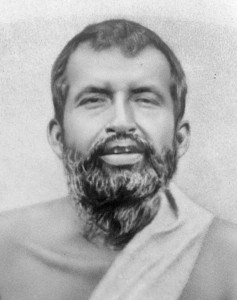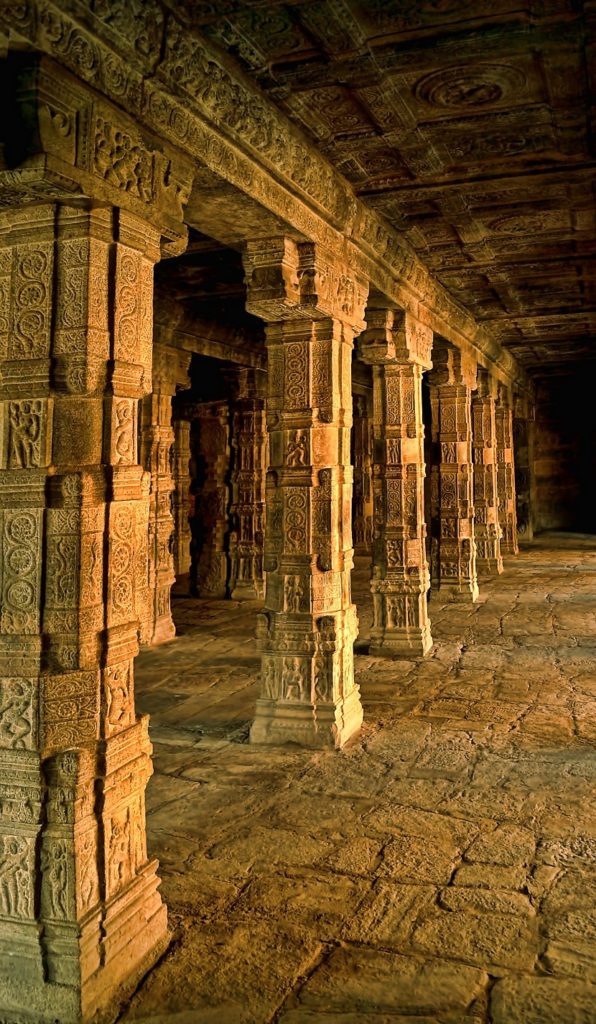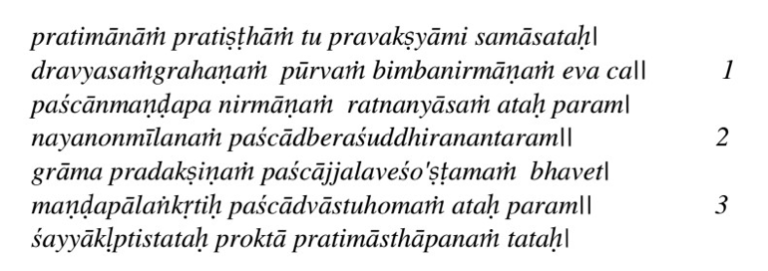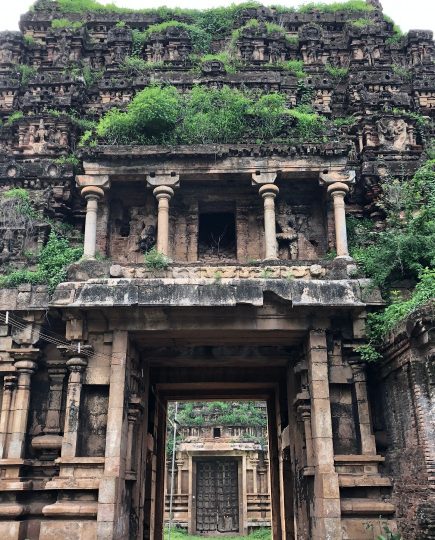Why Protect Temples?
For thousands of years, Hindus have built temples as
the abode of their deities, to create a central place in
cities, towns, and villages, where communities
gather and spend time in spiritual pursuits.


Hindu temples are epicenters of powerful, healing energy of enlightened masters and Rishis. The deities in Hindu temples are living deities that don’t just heal people but respond to their prayers. A temple was meant to be a place where an individual can spend quality time with his ishta devata, or chosen deity, to further in his/her spiritual journey. Hindu temples were built by kings and masters as enlightenment ecosystems. Destruction of Hindu temples destroys this place and space. Once a deity is defiled, damaged, or even moved from its place of installation, it no longer radiates the same energy. Destruction of Hindu temples is the destruction of the spiritual lifeline of Hindus and spiritual seekers.
Every Hindu temple is a masterpiece of excellence in architecture. Even the remotest, smallest temple which is a few centuries old is not plain, but rather exquisite in its architectural design, carving, the precision of elements, and interpenetration of open and built spaces. Many temples have unique features of sunlight falling at the feet of the presiding deity etc. Hindu architects were maestros, who were not just skilled, but extremely precise in their execution of designs, and knew the movements of the suns and stars very well. The Tanjore Golden temple was called so because it was fully covered with gold. Architectural elements in the stone reveal this. When these temples are destroyed, we lose not just a structure of ancient heritage, an enlightenment ecosystem, but also all the knowledge and artistry that goes into the architecture and construction of temples. Vastu shaastra was a unique science, not found in such great detail anywhere else, which gave insights into the right placement, materials, construction methods etc for the construction of all types of buildings, especially temples, for harmony and auspiciousness. This science has its source directly in Hindu scriptures.
There are very few architects and designers alive today who know how to build temples in the way they were built many centuries ago. This is because this art and science are almost destroyed.
Above all else, Hindu temples serve as a unifying force in areas where Hindus are in small numbers. In countries and regions where Hindus are minorities, the Hindu temple is still the center of all religious activity – all religious festivals are celebrated in the temple. All initiations and family ceremonies are performed in the temple. It brings Hindus together. In areas where there are no Hindu temples, tribals and Hindus suffer the threat of forced or unlawful conversions to Christianity or Islam, by evangelicals and extremists. With no unifying force, Hindus feel directionless and lonely and are bereft of a support system and community that can protect them from such attacks on their faith.
The Significance of Temples
Hindu temples were meant to be the focal point of the settlements, where all the activity happens from dawn till dusk. The break of dawn would announce the ringing of temple bells, with religious offering of arti, then there would be distribution of naivedyam to the devotees, and the rest of the day was spent in preparations of the naivedyam, decorations for the deities, study of scriptures, chanting of mantras, and the day would end with another arti. Temples were the hub of all activity in Hindu towns and cities in the ancient ages. A Hindu temple was designed to thrall all the six senses, to lift seekers out of their low mood, and give them the guidance they are seeking.
This significance of temples has undergone a drastic change in the last 1500 years. Before the advent of invaders and colonialists, India was Akhand Bharat, spanning most of South Asia. This is why most of the South Asian countries are dotted with majestic, brilliantly carved Hindu temples, which are a feast for the eyes.
Hinduism, or Sanatana Hindu dharma, is polytheist. Not only does it have many “gods,” as per the tenets of Hinduism, everything is Divine. Every being is Divine, and they take multiple births until they realize this Divinity. Every birth is another stepping stone to their Ultimate liberation. The first verse of the first Upanishad, Isha Vasya Upanishad, says this clearly:
īśāvāsyamidaṃ sarvaṃ yatkiñca jagatyāṃ jagat |
tena tyaktena bhuñjīthā mā gṛdhaḥ kasyasviddhanam ||
Isha Vasya Upanishad, Verse 1
The goal of all life, as per Hinduism, is realizing your own divinity. That is enlightenment, that is Moksha, that is liberation. Deities are a part of this enlightenment ecosystem, which enables any spiritual seeker to connect with and realize their divinity. What you admire, what you constantly think, you become that. Hence, spending time in the presence of Hindu deities, offering worship and prayer to them, cherishing a feeling of devotion towards them, is the simplest and sweetest way to progress on the path towards one’s own divinity. A Hindu temple is a place where the energy field of a certain deity can be experienced by anyone entering the temple.

Deities, in most Hindu temples, are not just carved statuettes of stone but are living deities. By means of an elaborate process called prana pratishtha, the presence and energy of the Hindu god/goddess is invoked in the idol, and after the ritual is complete, the deity then radiates all the auspiciousness and qualities of the Hindu god or goddess. When this process is completed by an enlightened being, its power is manifold. These processes are different for every god or goddess, and are elaborately described in the Agama Shaastras.


“Now, I will explain briefly the process of installation of the idols within the shrine. The installation is performed through a series of 22 activities. The first one is the collection and arranging of the required materials. Second is the structuring of the idol. Then, construction of the pavilion. Next, fixing the gems. Opening of the eyes of the idol, purification of the idol, circumambulatiing the village, keeping the idol immersed in water, decoration of the pavilion, fire-ritual related to the Vaastu deities, designing the couch, perfecting the idol, tying up the protective thread, placing the idol to be in recumbent pose on the couch, arranging the vessels (kumbhas), dedicating the idol, doing the nyasa of the actual form of the Deity, offering the oblations, offering the ceremonial fees, the Nyasa of the mantra, preparation of snapana and adoration – these are 22 activities prescribed for the installation. I will give the details of these activities, one by one.”
Kamika Agama, Purva Pada, Chapter 68, Verses 1-6
Once the praana pratishtha is complete, the deities are living deities. They are attended to by priests as real living beings – they are fed, dressed, bathed, put to sleep, woken up by the priests. All the food and flower offerings brought by devotees are offered to the deities for blessings, and are then distributed back to the devotees and visitors as prasad.
Thus, a Hindu temple is not just a gathering place or a prayer hall, unlike a mosque or a church. A Hindu temple is the abode of the presiding deity. It is an energy field, which radiates the auspicious energy of the presiding deity, and as such, many temples are famous for specific boons. For example, Sri Kalahasti temple is famous for removing doshas of the Navagrahas. Each temple has its own unique character, significance, and place in the society, and is irreplaceable, once the deity is established.

In ancient times, temples were the center of towns and cities, as enlightenment or Moksha was the highest purpose which all human beings aspired to. Hindu temples helped people from all walks of life to realize this purpose. They served the purpose of a community centre as well, where one could hear the chanting of kirtans, recitation of mantras from Shaastras, dances in praise of deities, hear Vakyarth Sadas amongst learned scholars on the Shaastras, and see different pujas, archanas and rituals based on the Hindu calendar. They were the center of life in a village or town. Even today, there are many “temple towns” in India, where originally all life revolved around the main temple. For example, the temples of Hampi (now an abandoned town but the capital of the Vijayanagara empire), Thiruvannamalai, Shirdi, Tirupati and many more. The temple was the heart of a city of Bharat.
Many Hindu masters spent their entire lives worshiping a deity and became enlightened following that path. Bhagwan Ramana Maharshi spent His entire life in the Arunachala hill, worshiping the Arunachala deity in the Annamalai temple. Bhagwan Ramakrishna Paramahamsa was an ardent Shaakta who spent His entire life worshiping Devi Kali in the Dakshineswar Kali temple, near Kolkata. Hindu masters showed the path towards enlightenment to their entire sampradaya by deity worship and upholding the traditions of temples.
Why Hindu Temples Are Under Threat Right Now
In 1951, The Hindu Religious & Charitable Endowment (HR&CE) Act was passed, which empowers state governments to appoint members to the boards of temples. It also gives them the right to manage the property and wealth of temples, for the upkeep of temples. On the surface, this looks like a means for better administration, but in reality, this act has allowed state governments to use the donations made to temples by devotees for other purposes, including purposes that are counterproductive to the growth and prosperity of temples. Due to this act, the temples are no longer considered privately owned property but are considered as state-owned public property for all legal purposes. Due to this, the courts of India can interfere in the day to day functioning of temples, and pass judgments on how rituals must be carried out, who enters the temples, what are the rules of the temples, to the extent of whether diyas must be lit in the temples or not. This level of interference by courts, which are not experts in Hindu Dharma Shaastras, destroys Hindu temple traditions instead of preserving them.
For example, under the HRCE act, in Andhra Pradesh alone, 34,000 temples came under state government control. Out of the donations received by these temples, only 18% is given back to the temples for upkeep of the temple, and 82% is used for other activities, as per the discretion of the ruling parties.
Many Hindu temples receive generous donations from ardent devotees. These donations are made out of love for the deities, and for the growth of Hindu temples. Tirupati temple alone receives close to ₹3000 crores (₹300 million) per year in donations. The Siddhivinayak temple in Mumbai received 35 kgs of gold (worth close to ₹1.4 million) in a single donation from a devotee in 2019. Moreover, rath yatras and other festivals of Hindu temples generate huge amounts of donations. The Hindu Athi Varadar Festival raised ₹8 crore (₹0.8 million) in one festival for the HRCE. Hindu temples are not “poor.” They are becoming impoverished due to the plundering of their wealth. These are huge sums of money that are funneled out of the Hindu ecosystem and used for settling government debts, and giving subsidies for causes completely unrelated to Vedic heritage.
Apart from control, wealth management and interference in functioning of Hindu temples, a new threat is emerging over the last decade. State governments have torn down or “relocated” uncountable Hindu temples whenever they deem fit. Many of these temples are ancient mutts, with thousands of years of heritage. In Puri alone, numerous mutts and ancient temples were razed to the ground in 2019 alone, by order of the Orissa government. In Tamil Nadu, 22 Hindu temples were ordered to be “relocated” to make way for construction of highways in the year 2019 alone.
Even sacred Hindu temple and pilgrimage sites are taken over by governments, and instead of “upkeep,” as is their duty, these lands are given over to evangelical Christian outfits or for industrial construction. Example, five out of seven Thirumala hills have been taken over by the state government.
What makes the problem worse is that the temples which are not under state governments get no tax exemptions on donations. So, donors have little incentive to make huge donations to those temples. The temples under the state governments get tax exemptions on the donations, which are eventually of profit to the state government, not the temples.
Lastly, the hatred for Hindu temples which destroyed temples during the reign of Islamic invaders has not yet been erased. There are still unprovoked attacks on temples, temple deities, and even horrifying incidents of Muslim extremists defiling Hindu deities by defecating on them. These are not isolated incidents but rather, they follow the same pattern in cities dotted across the country, with the same motivation of destroying idol worship. Similar crimes are observed in India, Bangladesh and Pakistan. Hindus are often powerless to salvage these crimes for fear of their lives, and because a corrupt system does not allow them the resources to take action against criminals.09
All of these factors have led to a dismal state of affairs for Hindu temples, where the people no longer preserve the cultural heritage and ecosystem of enlightenment of Hindu temples, the state is exploitative towards temples, and anti-Hindus have every advantage in destroying temples. In such a scenario, it becomes imperative to revive temples and make people aware of the cultural and spiritual wealth of our temples.
A Brief History of Attacks on Hindu Temples
The history of the Indian subcontinent is a long, winding one, with many distortions by historians. Hindus, the original inhabitants of the Indian subcontinent, faced many savage attacks from foreign invaders from ~600AD till independence (1947). The Islamic invaders, who were extremists and cruel to Hindus, waged numerous wars on Hindu kings. Far worse than that, they defiled and destroyed Hindu temples, especially mutilating or breaking the deities. They took Hindu women and children as their slaves after the war, who were forcibly converted to Islam. Their ideology taught them that Hindus worship a “false” god. Idolatry was against their religious ideas and they took measures to destroy Hindu temples when not necessary.
One can get an estimate of the extent of damage that was done during the period of the Islamic invaders from the actions of one Islamic invader: Mahmud Ghazni, one of the most savage invaders, had vowed to destroy the idol worship of India.

To achieve this, he invaded many cities, and destroyed all their temples. One of the chief deities of the city of Thanesar was taken back to Ghazni, where it was thrown into the public streets, to be trampled on desecrated by ‘faithful’ Muslims. He invaded Mathura, where he burnt the Keshav Rai Temple, the birthplace of Bhagwan Krishna, to the ground, and looted all the wealth of the temple. He destroyed the Somnath temple, looted about 20million dirhams of gold, silver and jewels, and defiled the main deity.
In this way, each Islamic invader tried to better the record of his predecessor in terms of looting and destroying Hindu temples and converting infidel Hindus to Islam.
Islamic invaders started losing power in India, and Portuguese, Dutch, French and British regimes created colonies in India for their empires. In these colonies, Hindus suffered brutalities under the Portuguese rule, for over 450 years. Portuguese were orthodox Christians who believed that Hindus worship a false God, and imprisoned Hindus, subjected them to brutalities. They stopped all public practices of Hinduism, including going to Hindu temples. No growth or maintenance of Hindu temples happened during this period, and many ancient structures were reduced to dilapidated buildings.
During the reign of the British empire, Hindus had religious freedom to perform their rituals and rites, but not without disdain from the empire. The British missionaries spread misleading, gory stories of the “savagery” of the Jagannath Temple Rath Yatra, which was considered a cruel and primitive practice by the Britishers. They charged the pilgrims a tax for the same, part of which later went to the empire instead of the upkeep of the temple. This continued in the laws of the British, which slowly allowed the empire to interfere in the functioning of Hindu temples. They did not do anything alarmist, but rather, they chiseled off the Hindu-ness from the laws of the country. They silently looted much of the wealth of the temples, including the Kohinoor diamond of Somnath temple. They also destroyed the Gurukul education system, by replacing it with their own education system, which spelled the destruction of the Hindu temple ecosystem. Instead of being centers of buzzing activity, temples were reduced to isolated structures which people visit only once in a while.
*Article by Arti Agarwal
References:
1. Crimes Against India and the Need to Protect Its Ancient Vedic Tradition – Stephen Knapp
2. Hindu Temples & What Happened to Them: Volume 1 & 2 – Sitaram Goel
3. Indian Architecture (Buddhist & Hindu Period) – Percy Brown
4. Kamika Agama, Purva Pada
5. Isha Vasya Upanishad
6. Attacks on Hindu Temples in 2019 – Cultural Genocide of Hindus
7. Tamil Nadu: Athi Varadar fest rakes in Rs 8 crore
8. Chennai: 22 temples to be relocated for road projects

Help Support Hindu Temples
Currently, there are thousands of ancient temples under threat. Take action today to help support their renovation and preservation.
